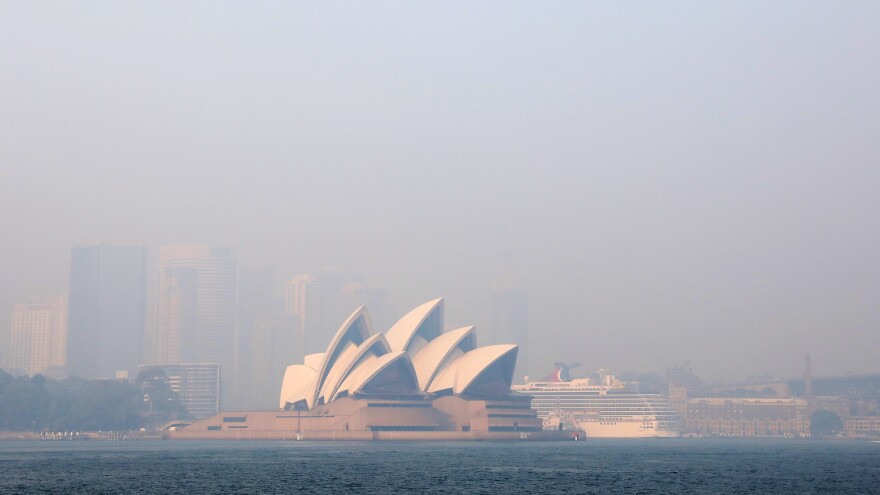Fires are laying waste to wide swathes of land across Australia on scales that are tough to comprehend. In the southeastern state of New South Wales alone, where about 60 fires , the infernos have consumed some 4,000 square miles of land — or an area roughly eight times the size of Los Angeles.
Authorities say the fires there have left at least six people dead and around 600 homes destroyed, and New South Wales is far from being the only region racked by fire. Scores more bushfires have torn through thousands of square miles in the states of , Victoria and Queensland, where a — among many — has claimed dozens of square miles and .
All this, and Australia still hasn't reached the peak of its traditional fire season, which usually doesn't happen until January and February.
This year has seen "the second driest January-October period on record" in Australia and the driest in more than a century, , senior climatologist at the country's Bureau of Meteorology.
"And unfortunately that's been compounded by the fact that we've had a very warm year to date," he added, calling the first 10 months of the year the "hottest on record."
It's no fluke: most parts of New South Wales, where fires have raged hardest, have been suffering drought for more than two years. Coupled with high winds and temperatures, this has created what one fire official called a "tinderbox-like conditions across much of the state."

It has also made for a rather surreal — and downright unhealthy — scene in the state's biggest city, Sydney. For days, the metropolis has been draped in the cloak of a thick, smoky haze beneath a blood-red sun. And local officials vulnerable residents to stay indoors whenever possible.
Outside city limits, another population has found itself in danger: koalas.

Social media has been of the distressed marsupials, battered and burned by the raging fires. The Port Macquarie Koala Hospital in New South Wales put out a late last month, saying even then that hundreds of koalas likely had already died because much of their habitat in that area was claimed by fire. Earlier this year, the Australian Koala Foundation there were no more than 80,000 of the animals still in the wild.
In a bright spot, since publishing its call for donations, the hospital has received more than $1.2 million from supporters on GoFundMe — far exceeding its original $25,000 goal. But the long-term effects on the koalas' prospects are far less hopeful, according to ecologist Stephen Phillips.
"You're left with a very small group that survive," he told the Australian Broadcasting Corporation last month, saying it was likely that up to 70% of the breeding populations in some areas had already died.
"It has certainly set the general recovery objectives of conservation back a long time, probably 10 to 20 years in some instances depending on the scale of the impact."

The widespread disaster has put pressure on Prime Minister Scott Morrison. Critics say his government hasn't done enough to address the impact of climate change on Australia, a major issue in last spring's election.
Morrison himself, despite acknowledging the effects of climate change on the fires, recently between the country's carbon emissions and the blazes charring large swathes of its landscape.
Such a response isn't likely to satisfy advocates such as the Climate Council, which published a last week.
"For more than 20 years scientists have warned that climate change would increase the risk of extreme bushfires in Australia. These warnings have now become reality and we are seeing communities paying the price," Climate Council CEO Amanda McKenzie said in accompanying the report.
"We need the Federal Government to urgently develop a plan that prepares Australian communities as well as health and emergency services for escalating fire danger," she added. "We must also rapidly phase out the burning of coal, oil and gas which is driving more dangerous fires."
Copyright 2023 NPR. To see more, visit https://www.npr.org.





